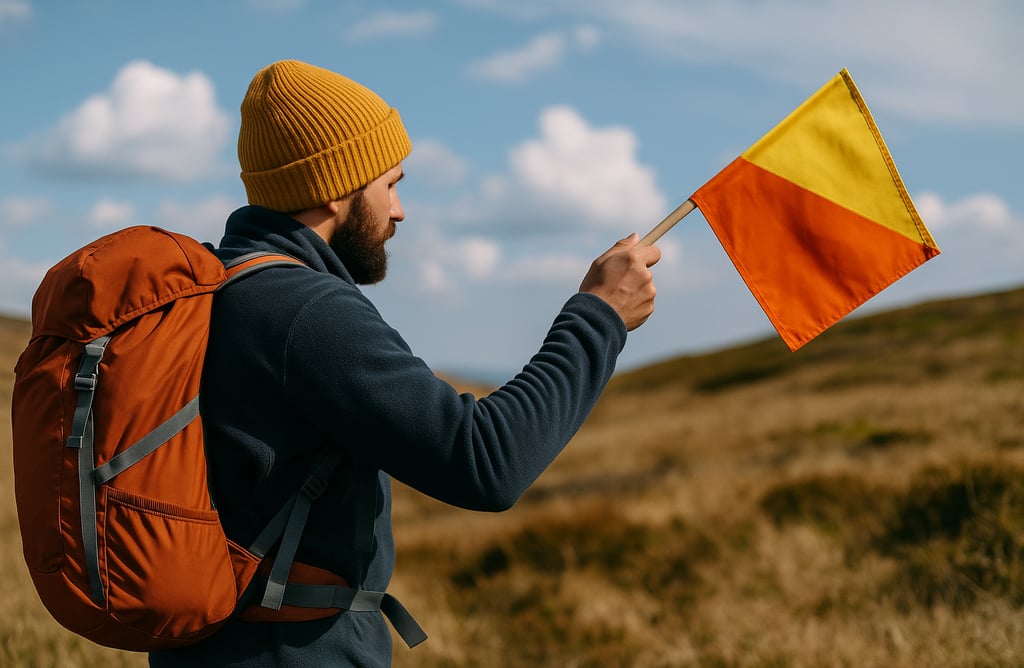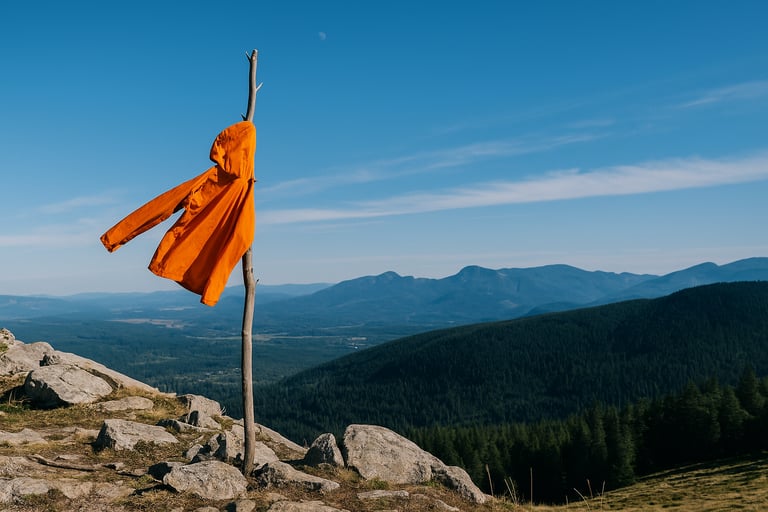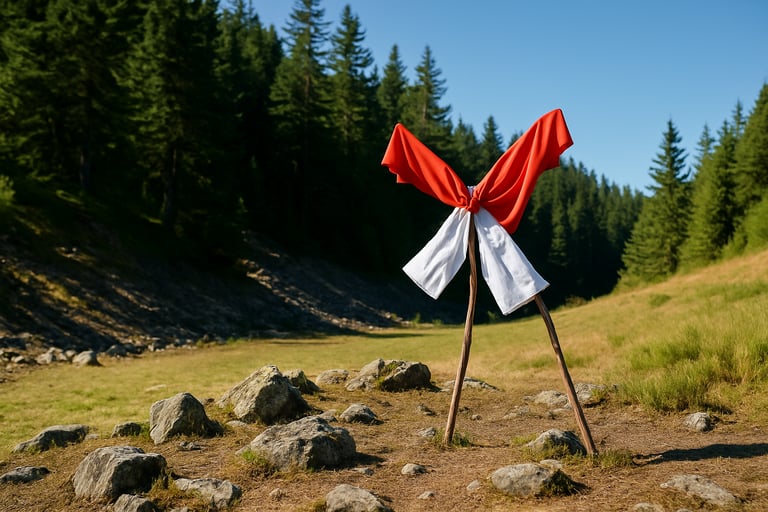Using Flags or Clothing to Signal for Rescue in the Wilderness
Need help in the wild? Learn how to use brightly colored clothing and improvised flags as survival signals to attract attention and get rescued faster. Tips for visibility, contrast, movement, and rescue success.


Using Flags or Clothing to Signal for Rescue in the Wilderness
Why Visual Signals Matter in Survival Situations
When you’re stranded in the wilderness and need rescue, visibility can mean the difference between being found or overlooked. Visual signals — especially flags or clothing — can dramatically increase your chances of being spotted by rescue teams or passing aircraft. They are one of the most effective visual signals to call for rescue when used properly in wilderness environments. These methods are simple, don’t require special tools, and can be created from everyday items you’re likely already carrying.
Choosing the Right Materials for Visibility
The best clothing signals for wilderness rescue are brightly colored or highly contrasting to the surrounding environment. If you're in a forested area, for example, reds, oranges, and whites stand out sharply against green and brown foliage. In snowy regions, use dark colors like navy, black, or deep blue. Synthetic rain jackets, emergency bivy sacks, or even sleeping bag liners can be repurposed into highly visible rescue flags. Always choose the item that provides the most contrast against your background.
How to Set Up Clothing or Flags as a Signal
To make your rescue signal effective, position it in an open space that can be easily seen from above. Tie clothing or material to tree branches, trekking poles, or long sticks, letting them wave freely in the wind. Movement helps attract attention, especially from aircraft. If you’re stationary at camp, consider placing large clothing items flat on the ground in a noticeable pattern, such as an "X" or "SOS." This technique pairs well with building signal structures to make your location more obvious to aerial search teams. These symbols are universally recognized by search-and-rescue crews.
Tips for Maximizing Signal Effectiveness
Try to keep your flag or clothing signal high off the ground to make it more visible over trees or uneven terrain. If the weather is calm and there’s no wind to create movement, consider combining the flag with using reflective materials as signals or use it in coordination with a mirror or flashlight. The more dynamic and unusual the display, the more likely it is to catch attention. Make sure your signal isn’t easily mistaken for natural scenery.
When to Use This Method Over Others
Clothing and flag signals are especially effective during daylight hours and when you're in a region with open visibility like deserts, mountaintops, or snowy plains. They work well when sound signals or flashlight beams might not travel far, and they're a good backup to other rescue techniques. Keep in mind that visibility from the air is the priority — always think in terms of how your signal would appear to someone flying overhead.
Final Thoughts: Stay Ready and Stay Seen
In a true survival scenario, staying calm and using your available resources creatively is key. This kind of resourceful thinking is part of the mental strategies for staying strong when you are alone in the wild, especially when time stretches and uncertainty builds. Clothing and makeshift flags are often overlooked tools that can dramatically boost your chances of being spotted. With just a little thought about contrast, placement, and motion, you can turn your gear into a lifesaving visual signal.




© 2025. All rights reserved About | Privacy Policy | Terms and Conditions | Affiliate Disclosure | Disclaimer


